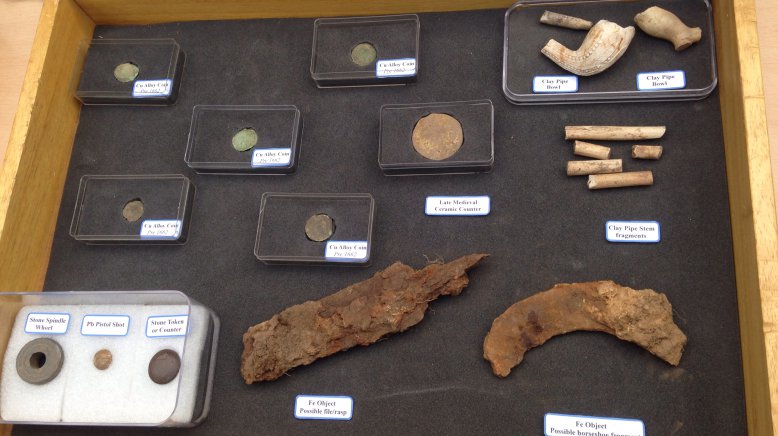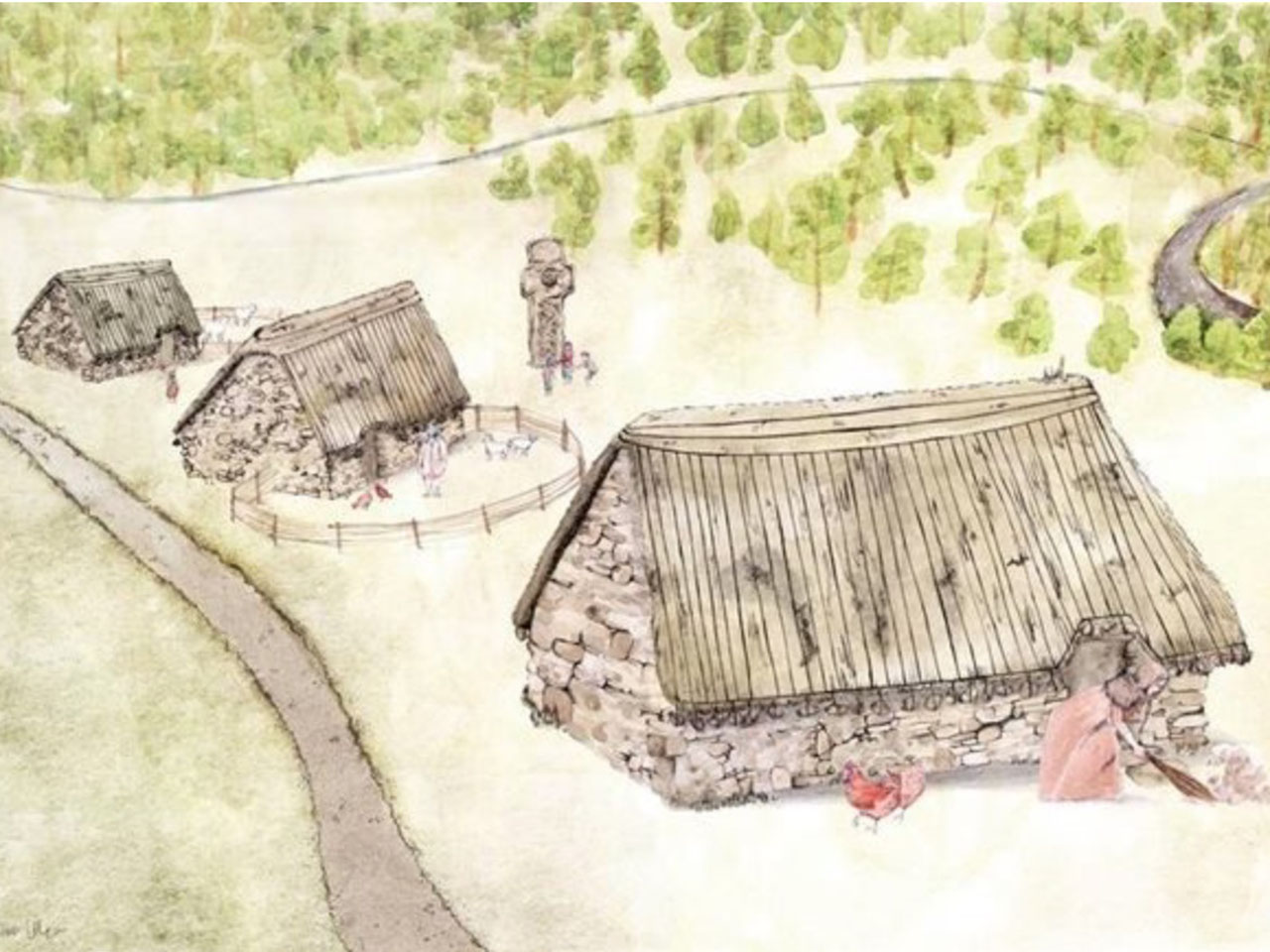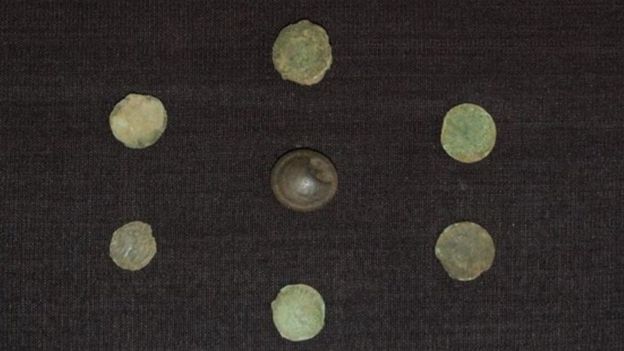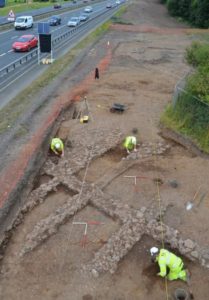Finding the ‘lost’ village of Cadzow
(From the BBC (March 10, 2016) and Transport Scotland sources)
Motorway construction workers have unearthed archaeological artifacts that experts believe may be from a lost medieval Scots village.
The crew made the discovery 18 months ago on the verge of the M74, near J6, opposite Hamilton Services.
It included two structures, coins and pieces of pottery, and smoking pipes. Archaeologist believe they may be more than 1,000 years old and could finally identify the location of the lost village of Cadzow.
— Transport Scotland video about the “lost” village of Cadzow
Cadzow was the name given to a community on the edge of the River Clyde at this location until 1445.
King James II gave his permission for the area to be renamed and residents were forced to move a mile or so south to the town’s current location.
The artifacts and structures were uncovered close to a memorial stone which rests against a tree on the motorway verge.
The stone marks the former position of the 1000 year-old Netherton Cross – one of the earliest symbols of Christianity in the town and one of the most valuable pre-Norman Christian relics in Scotland.
While preparing the ground for construction of a new motorway lane, workers uncovered two ancient stone structures beneath the surface.
Work was then stopped to allow a specialist team from Guard Archaeology to investigate the site and safeguard anything of historic interest.
Religious connection
Warren Bailie, from Guard Archaeology said: “Medieval remains rarely survive in industrial centres such as Glasgow due to widespread industrialisation of the nineteenth century, including mining, road and housing construction.
“Very few medieval settlements have survived, so we’re delighted to recover and record such a rare and interesting piece of Scottish history.”
Kevin Mooney, project director for the excavation, said: “It is believed one of the structures was literally on the position of the Netherton Cross, and there is a possibility that one or other of these buildings may have had some religious connection, although further analysis of the artifacts may shed some light on this.
“Despite the area being heavily mined in the early 1900s, it’s possible the area around the Netherton Cross was not disturbed for religious reasons.
“We are not sure of the age of these structures just yet, however, the Netherton Cross dates from the 10th or 11th Century, therefore it is possible that the surrounding buildings could date from the same period – so we could be looking at a site and artifacts that are 1,000 years old.”
Medieval beginnings
During the dig the team found nine medieval coins, fragments of animal bone, clay smoking-pipe fragments and more than 200 sherds of glazed medieval pottery that could date to the 1400s or earlier.

Mr Mooney added: “It is very unusual to find so many coins in one place. We think it’s possible that people thought it lucky to leave a coin at the religious shrine.
“We’ve also discovered two gaming pieces, one carved of stone and the other a circle of green-glazed medieval pottery, which could have been used in a medieval game of some sort.
“This provides us with an all too rare glimpse into the past, shedding light on the medieval beginnings of Hamilton.”
The team also found a lead pistol shot in the floor of one of the structures, possible evidence that an officer involved in the Battle of Bothwell Bridge (1679) may have taken cover in the, then ruins, of the buildings at Netherton.
The remnants of the structures and the contents have been recorded and reported to Historic Environment Scotland.
Further analysis and dating will take place of the artifacts recovered.
The discoveries were made during work to widen part of the motorway as part of the £500m M8 M73 M74 Motorway Improvements Project.




